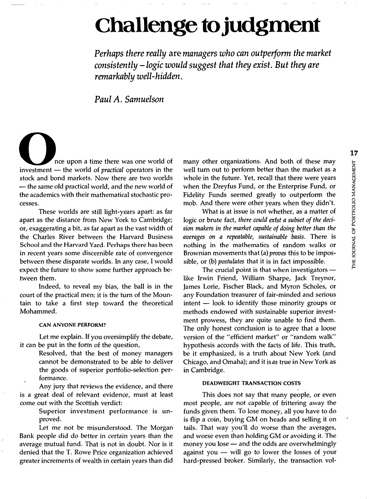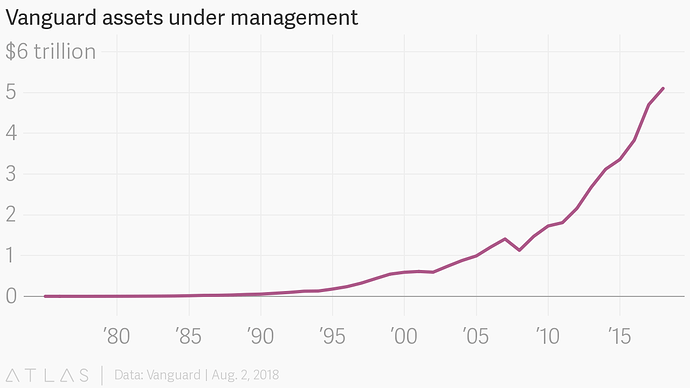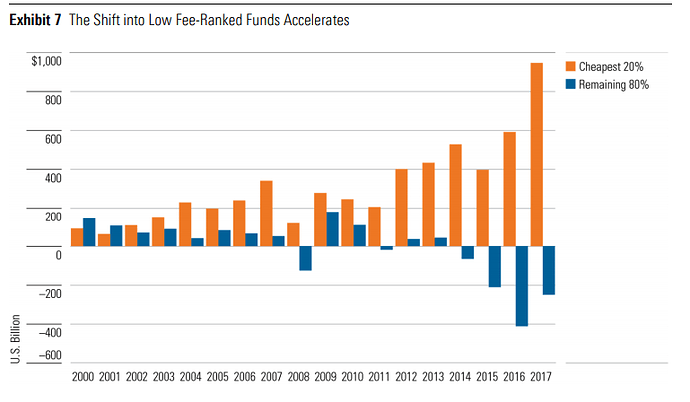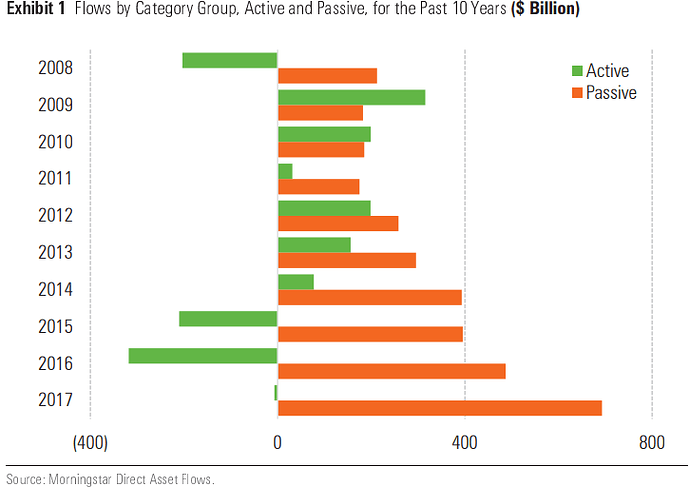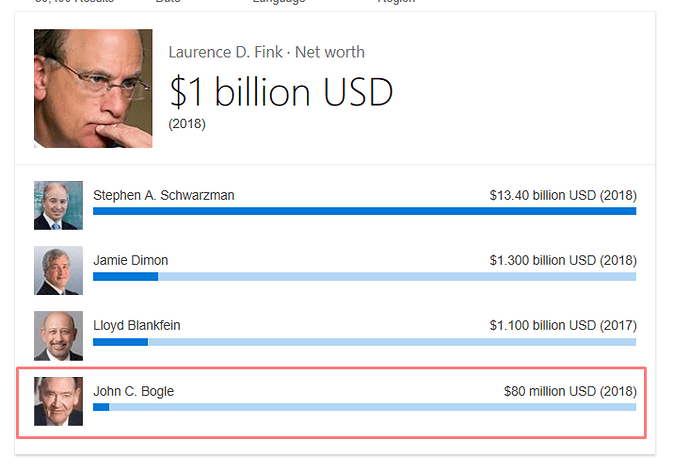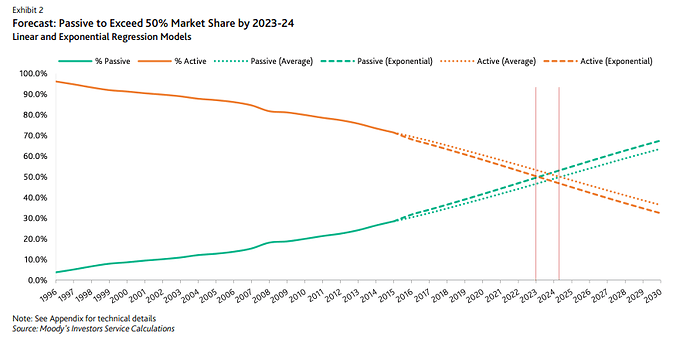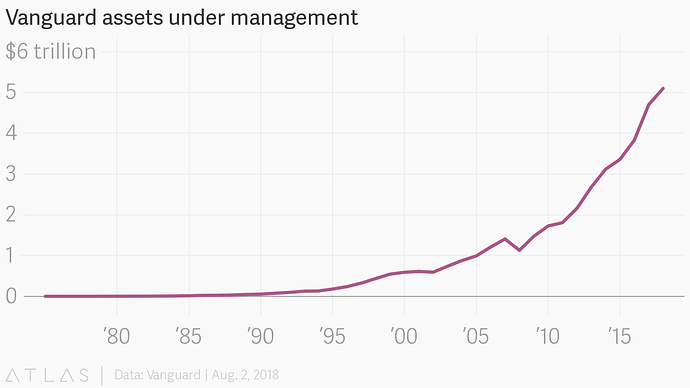Sometimes it’s always surprising to look at the humble beginnings of some of the biggest companies, trends in the world. One such company is Vanguard Asset Management.
Today in 1976, Jack Bogle launched the world’s first index Fund which tracked the S&P 500. Jack Bogle in 1973-74 was working in a company called as Wellington Management. In 1976 he was fired from the company after he pushed through a merger which didn’t work out.
Known for his pugnacity rather than staying down, he started Vanguard First Index Investment Trust, the world’s first Index fund. An investing style through decades later would go on redefine how people invest at low costs.
When he created the fund, he wanted to raise $150 million dollars but the issue was a epic flop. He ended up raising only $11 million. I quote from this Keynote Speech
Winning the board’s approval turned out to be the easy part. The tough part was raising the initial capital for the index fund. I wore out a lot of shoe leather walking up and down Wall Street, trying to find underwriters to manage our initial public offering (IPO). At last, I recruited the Street’s then-four-largest retail brokers, led by Dean Witter.
They expected to raise $150 million in the initial offering. Wrong! The IPO was a flop: $11.3 million. The underwriters suggested that we accept the failure and send the investors their money back. But I wouldn’t hear of it. After all, the world’s first index mutual fund was ours, and it could now begin. On August 31, 1976, it did. But its subsequent reception was, well, underwhelming. It was called “Bogle’s Folly,” and a poster was circulated around Wall Street.
So the first index fund started with a failure. Jack Bogle was inspired by a paper written by celebrated economist and Nobel laureate, Paul Samuelson
Interview of Jack Bogle
http://jpm.iijournals.com/content/40/5/42
Quoting from the paper
Resolved, that the best money managers cannot be demonstrated to be able to deliver the goods of superior portfolio selection performance. Any jury that reviews the evidence, and there is a great deal of relevant evidence, must at least come out with the Scottish verdict: superior investment performance is unproved.
But I suppose the fees to be earned by such sensible and prosaic behavior are less than from essaying to give it that old post-college try. What logic can demonstrate is that not everybody, nor even the average person, can do better than the comprehensive market averages. That would contradict the tautology that the whole is the sum of its parts. I would like to believe otherwise. But a respect for evidence compels me to incline toward the hypothesis that most portfolio decision makers should go out of business.
At the least, some large foundation should set up an in-house portfolio that tracks the S&P 500 Index — if only for the purpose of setting up a naive model against which their in-house gunslingers can measure their prowess.
Paul Samuelson, later in a speech said
I rank this Bogle invention along with the invention of the wheel, the alphabet, Gutenberg printing, and wine and cheese: a mutual fund that never made Bogle rich but elevated the long-term returns of the mutual-fund owners. Something new under the sun.
That is high praise from a Nobel laureate.
Today, Vanguard is the second largest asset manager with over $5.2 trillion in assets in the world, next only to Blackrock which manages $6.3 trillion. In 2009, Vanguard’s total assets were just 45% of that of Blackrock.
Pension and Investments forecasted the growth of AUM based on the current rates and it said that, at the current rate Vanguard will hit $20 trillion in assets by 2027
Based on Vanguard’s 15.98% and BlackRock’s 8.2% compound annual growth rates in the eight years ended Dec. 31, Vanguard — if those growth rates remain consistent — would surpass BlackRock by the end of 2021. The worldwide AUM as of Dec. 31, 2021, would be $8.94 trillion for Vanguard and $8.62 trillion for BlackRock, as calculated by P&I. At that same rate, Vanguard would exceed $20 trillion by the end of 2027.
What Vanguard did to expense ratios.
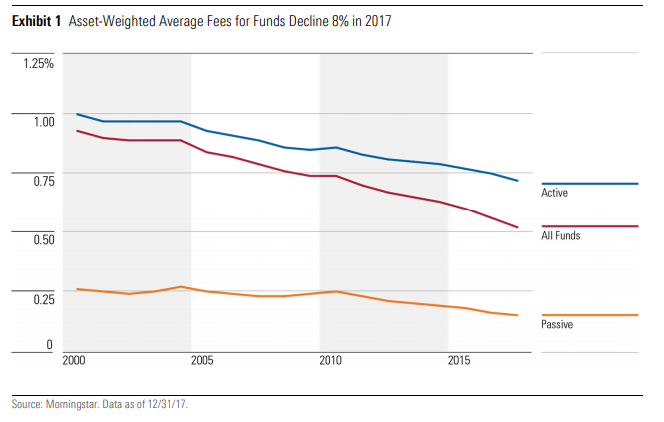
The Vanguard effect- Passive inflows. Data from Morningstar
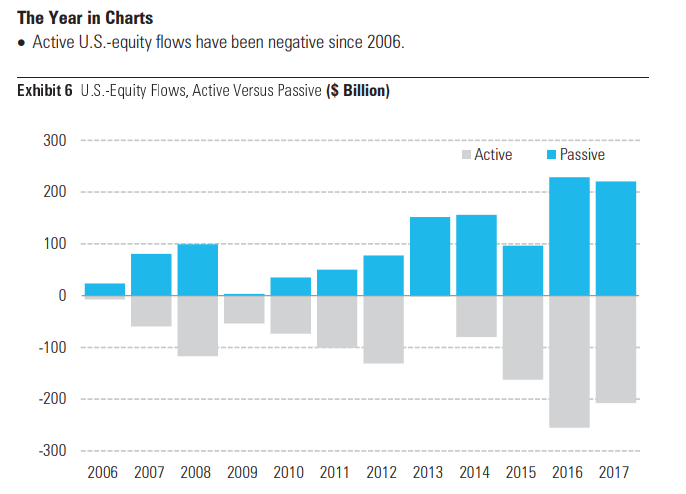
It would be fair to assume that after so much success Jack Bogle would be multi-billionaire, but you’d be wrong. But he built Vanguard in such a way that the investors own Vanguard. It’s crazy to think that he let of a chance of being a billionaire.
At Vanguard, there are no outside owners, and therefore, no conflicting loyalties. The company is owned by its funds, which in turn are owned by their shareholders—including you, if you’re a Vanguard fund investor. Our unique client-owned structure allows us to return profits to our fund shareholders in the form of lower expenses. Low costs help our clients keep more of their returns, which can help them earn more money over time.
In other words, Vanguard is structured as a “mutual” mutual fund company. - Vanguard
In India the trend of passive investing is yet to take off. There isn’t a category wise break up of passive index funds in the total AUM but based on manual calculations the combined AUM of all index funds in India is just about Rs 3500 to Rs 3800 crores. ETFs which except for gold are all passive makeup only 4% of the total AUM.
‘If a statue is ever erected to honor the person who has done the most for American investors, the hands-down choice should be Jack Bogle.’ Warren Buffett
It was not in the interests of Wall Street to have the development of index funds, because it brought down fees dramatically. When Jack started, very few people, certainly Wall Street did not applaud him. He was the subject of some derision. And now we’re talking trillions when we get into index funds.”
“Jack at a minimum has saved, in the pockets of investors, he’s put tens and tens and tens of billions into their pockets. Thank you on behalf of investors! - Warren Buffet
